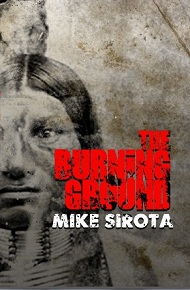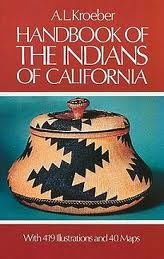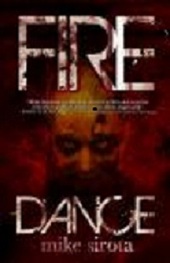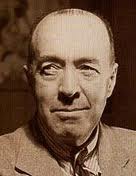My new novel, The Burning Ground, will be published on February 14th. Here is a recent interview I did with Molly Lewis, my editor at ZOVA Books, about the story.
Q: How did you get the idea for The Burning Ground?
A: One of the most used and abused books in my collection is A.L. Kroeber’s Handbook of the Indians of California. (“Handbook” is a misnomer; you can barely  hold this thick tome in one hand.) I used it to research the Washo tribe in my novel, Demon Shadows, and the Modoc tribe in The Well (now The Modoc Well). When I read about the burial customs of the Maidu people—they actually called their cemetery a burning ground and set fire to brush spread across the graves to help the dead pass on to the next world—and then learned that most of the Maidu had been slaughtered during the Gold Rush, the old “what if” kicked in. What if, because of the violent way in which they died, the spirits of those from one particular small village remained trapped in their burning ground? Then, in more contemporary research, I read about the (still ongoing) desecration of Indian burial grounds by people digging for artifacts. What if the graves of the Maidu from this village were desecrated, releasing the spirits—who are really pissed off by this time? And so the plot evolved.
hold this thick tome in one hand.) I used it to research the Washo tribe in my novel, Demon Shadows, and the Modoc tribe in The Well (now The Modoc Well). When I read about the burial customs of the Maidu people—they actually called their cemetery a burning ground and set fire to brush spread across the graves to help the dead pass on to the next world—and then learned that most of the Maidu had been slaughtered during the Gold Rush, the old “what if” kicked in. What if, because of the violent way in which they died, the spirits of those from one particular small village remained trapped in their burning ground? Then, in more contemporary research, I read about the (still ongoing) desecration of Indian burial grounds by people digging for artifacts. What if the graves of the Maidu from this village were desecrated, releasing the spirits—who are really pissed off by this time? And so the plot evolved.
Q: What research was involved in fashioning the life and culture of the Maidu?
A: Just about any and every book about California Indians that I could get my hands on (not too many), though again, Kroeber was the primary resource. A cultural anthropologist, Kroeber spent seventeen years among California’s indigenous population in the early twentieth century. The scope of his research  is remarkable. (His daughter was Ursula Kroeber, better known to readers of science fiction as Ursula LeGuin.) Three lengthy chapters are devoted to just the small Maidu tribe. TMI for most people, but I loved doing the research.
is remarkable. (His daughter was Ursula Kroeber, better known to readers of science fiction as Ursula LeGuin.) Three lengthy chapters are devoted to just the small Maidu tribe. TMI for most people, but I loved doing the research.
Q: How do you feel your work as an editor helped or hindered your writing?
A: Well, I would think that you, as my editor, probably appreciate the fact that my manuscripts require minimal work, as evidenced by the handful of changes that we made in both Fire Dance and The Burning Ground. As a perfectionist, I probably go overboard in being anal. As an editor, I don’t want any typos or other errors. As a writer I want every detail to be correct. This doesn’t always work out 100% of the time, but I do my best.
Q: What writing habits do you keep?
A: I take a long walk in the morning and then start writing about mid-morning. Late in the afternoon, four, maybe five o’clock, the “creativity” button in the brain shuts off, and I stop. The usual output is 1,500 to 2,000 words.  That’s the day-to-day routine. The bigger picture: I prepare an outline and do extensive preliminary research before I write word one. Then I write the first draft, beginning to end, not stopping at all for research. The second draft consists of grunt work—trimming the fat, filling in the many blanks I leave while focusing on getting the story down, that sort of thing. The third—and final—draft is my favorite, for it always follows a trip to the locale of the story. For The Burning Ground I traveled to the active ghost town of Downieville, population 325, in the Sierra Nevada foothills. This “living research” breathes life into my stories.
That’s the day-to-day routine. The bigger picture: I prepare an outline and do extensive preliminary research before I write word one. Then I write the first draft, beginning to end, not stopping at all for research. The second draft consists of grunt work—trimming the fat, filling in the many blanks I leave while focusing on getting the story down, that sort of thing. The third—and final—draft is my favorite, for it always follows a trip to the locale of the story. For The Burning Ground I traveled to the active ghost town of Downieville, population 325, in the Sierra Nevada foothills. This “living research” breathes life into my stories.
Q: Have you ever considered writing a sequel to any of your horror novels?
A: I suppose a sequel can be made to anything. Cripes, in Star Trek III they brought Spock back to life after Trekkies revolted! But mine have so far been stand-alone stories. I mean, how many people get the calling to help spirits move on to the next world (Fire Dance and The Burning Ground), or drive demons back into the hell that spawned them (Demon Shadows and The Modoc Well) more than once?
hell that spawned them (Demon Shadows and The Modoc Well) more than once?
Q: In what way do you feel this book stands apart from the rest of your catalog of work?
A: When I dug farther back into the decimation of California’s indigenous population I became appalled at the extent of this genocide, beginning with the arrival of the Spanish missionaries and encompassing the decade or more after the Gold Rush. While my other two Native American-themed novels, Demon Shadows and The Modoc Well, have a comment or two about the treatment of Indians, none come close to The Burning Ground. This includes an Author’s Note and a significant plot adjustment with regard to the Maidu spirits—though sharing that here would be revealing too much.
Q: Are there any writers or books that were influential in this particular novel…or in your career in general?
A: Not this particular story. But for my career? That answer is always the same: Edgar Rice Burroughs. Tarzan,  John Carter of Mars, Pellucidar—all of his 100+ books were among my favorites. Without ERB I would have never become a writer.
John Carter of Mars, Pellucidar—all of his 100+ books were among my favorites. Without ERB I would have never become a writer.
Q: Looking back at the books you’ve written over the years, how has your work developed with time and experience?
A: I re-read many of my early works over the past year or so in preparation for making them available again under my own imprint, Atoris Press, via my second website, Swords and Specters. Most of them made me want to hurl. Each one will require extensive revisions before I would ever let anyone see them. As a teacher, editor, and writing coach these past couple of decades I also learned a great deal. With every book—with every page—that you write, you should be improving your craft.

I’d love to read a sequel to FIRE DANCE and view both on the big screen. Any plans for a screenplay?
From your mouth to the lodge of the Great Spirit, August!
I loved Fire Dance, The Modoc Well, and Demon Shadows and I’ll be the first in line to pick up my copy of The Burning Ground.
I’ve always been interest in the history of Native Americans. But for the last few years I’ve wondered about the original Pimu or Pipimar tribe of Santa Catalina Island. The setting, modern Catalina, and the ancient tribe that died out when they were relocated to the San Gabriel Mission by the Spanish settlers might be the stuff of a terrific ghost story. That is, if the story were written by someone of your talent.
Jeff Sherratt
Can’t wait to read the book! Loved FIRE DANCE and I’m sure THE BURNING GROUND won’t disappoint. I’m also very much looking forward the Feb 16th signing!
Funny that you should write a novel about the Gold Rush, Mike. I’ve been thinking a lot lately that the new internet promo for writers bears some analogy. In the 1850s, the gold strike provided a new alternative to acquiring wealth for those disillusioned with the conventional urban work market and willing to be of pioneering spirit. But in the end, it was still a long odds game. The early prospectors in the first wave had a fair chance of striking a vein, but once word got out only a small percentage of the huge waves to come actually made out.
How does this apply? Blogging and the internet now seem to provide an individual alternative to the standard publishing route, but now of course many prospectors are on the web waves. With books already to your credit, I think you are following the correct hybrid trail here, but I also wonder whether aspiring writers need to keep in mind that there is never a substitute for writing well and that, as Don Maass reminds us, in the end, many of the books that rise above the heap to become cultural favorites are still pushed by good old regular word of mouth.
I enjoyed reading about your process for writing and drafts.